When it comes to crafting a vibrant garden in the arid landscapes of Texas, it’s not just about picking plants that can withstand the scorching sun and sparse rainfall. If you’re a pet owner, you need to tread carefully, selecting foliage that’s not only tough but also non-toxic to your four-legged friends. But worry not, because creating a pet-safe haven that thrives in dry conditions is entirely possible, and I’m here to guide you through it.
Key Takeaways
- Creeping Thyme and Spider Plant are top choices for pet-safe, drought-tolerant plants in Texas.
- Non-toxic plant selection is crucial for pet owners to ensure a safe environment.
- Succulents like Haworthia and Sedum are ideal for low-water gardens and safe for pets.
- Regular maintenance, including proper watering and safe fertilization, keeps your garden thriving.
- By choosing the right plants and care strategies, you can create a beautiful, pet-friendly garden that endures the Texas heat.

“Magnolia Trees in North Texas …” from treenewal.com and used with no modifications.
Discover Pet-Friendly Greens For The Lone Star State
For those of us with pets, they’re part of the family, and their safety is a top priority. Therefore, when selecting plants for our Texan gardens, we must ensure that our green choices are safe for our furry companions. The good news is, there are plenty of drought-tolerant plants out there that are non-toxic to pets, and I’m excited to share some of these gems with you.
What It Means to Be Dry Climate and Pet-Safe
Being ‘dry climate and pet-safe’ is a dual promise. It means choosing plants that not only survive but thrive in low-water conditions, typical of Texas weather. At the same time, these plants should pose no harm if your curious pet decides to take a nibble. So, let’s dive into the world of pet-friendly xeriscaping—a landscaping method that reduces or eliminates the need for supplemental water from irrigation.
Importance of Non-Toxic Plant Selection
The importance of selecting non-toxic plants cannot be overstated. Every year, countless pets fall ill from ingesting plants that are harmful to them. As pet owners, it’s our responsibility to prevent these accidents by carefully choosing plants that won’t endanger our pets if they decide to explore with their mouths.
| Plant | Image | Description |
|---|---|---|
| Texas Sage (Salvia coccinea) | 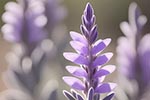 | tThis plant is well-suited to the Texas climate and is drought-tolerant once established. |
| Rosemary (Rosmarinus officinalis) | 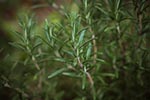 | Rosemary thrives in hot, dry conditions, making it ideal for Texas gardens. |
| Crape Myrtle (Lagerstroemia indica) |  | Known for its vibrant blooms and ability to withstand heat, crape myrtle is a popular choice in Texas. |
| Desert Trumpet (Eriogonum inflatum) | 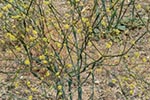 | As a desert-adapted plant, it can handle Texas’ dry and hot weather. |
| Hibiscus (Hibiscus syriacus) | 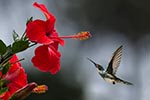 | With proper care, hibiscus can grow well in Texas, especially in areas with adequate moisture. |
| Weeping Bottlebrush (Callistemon species) | 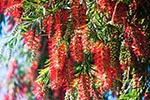 | Many Callistemon species, including the weeping bottlebrush, are drought-tolerant and would do well in Texas. |
| Coreopsis (Coreopsis species) | 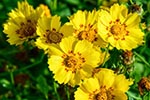 | These native wildflowers are well-suited to Texas landscapes, offering colorful blooms and drought tolerance. |
| Blue Echeveria (Echeveria glauca) |  | Succulents like Echeveria glauca are excellent choices for Texas gardens due to their drought tolerance and low maintenance. |
The eight plants listed above are from the ASPCA list of non-toxic plants safe for dogs, cats and horses. We researched which ones would generally thrive in the hot, dry summers and mild winters typical of many regions in Texas. However, Texas has its share of microclimates so you know best what the conditions of your garden are and what to consider when looking at the requirements of each plant when making your selections. We will share some care tips for each individual selection and put the name in bold once we have, so keep checking back.
Garden Heroes: The Best Dry Climate Plants Safe for Pets
Now, let’s introduce the stars of our pet-safe, drought-tolerant garden. These are the resilient troopers that will bring life and color to your Texan yard without a drop of worry for your pet’s well-being.
Meet the Succulents: Your Pet-Safe Desert Companions
Succulents are the perfect allies for the Texan gardener. They’re built to survive in dry climates, storing water in their leaves and stems, and many are safe for pets. They’re also incredibly diverse, offering a variety of shapes, sizes, and colors to beautify your space.
Most importantly, while succulents are a great choice, not all are safe for pets. For example, Aloe Vera, while a popular succulent, can be harmful to pets if ingested. Therefore, we’ll focus on those succulents that are both drought-tolerant and pet-friendly.
Safe Succulent Varieties
- Haworthia: Often mistaken for Aloe, these small, rosette-forming succulents are non-toxic to pets.
- Sedum: Also known as ‘stonecrop,’ these succulents come in many varieties and are safe for pets.
- Echeveria: With their gorgeous rosettes, these are not only safe for pets but are also quite drought-tolerant.
Caring for Your Succulents
Caring for succulents is a breeze. They prefer well-draining soil and containers with drainage holes. When watering, do so infrequently but thoroughly, allowing the soil to dry out completely between waterings. This mimics their natural arid habitat and keeps them happy and healthy.
Remember, the key to a thriving succulent garden is not just about how much you water, but also about the quality of the water. Use room temperature water and avoid letting it sit on the leaves to prevent rot.
Blossoming in the Heat: Flowering Beauties That Won’t Harm Fido
Besides succulents, there are flowering plants that can handle the heat and are safe for pets. These beauties will add a splash of color to your drought-resistant garden without the worry of pet toxicity.
Resilient Pet-Safe Flower Picks
- Creeping Thyme: This ground cover blooms with tiny flowers and is both drought-tolerant and safe for pets.
- Spider Plant: Known for its air-purifying qualities, it’s also a flowering plant that’s safe for pets and can tolerate some drought.
Creating a Colorful, Low-Water Oasis
Creating a colorful oasis in your garden doesn’t mean you need to sacrifice safety or water efficiency. Opt for native flowering plants that are adapted to the local climate and will require less water and maintenance. Group plants with similar water needs together to create a garden that is both cohesive and easy to care for.
And there you have it, the beginning of your journey to a pet-safe, drought-resistant garden in Texas. Stay tuned as we explore more about the right light conditions, maintenance tips, and how to keep your garden flourishing in the Texas heat.
Shade and Sunny Spots: Cultivating Pet-Safe Diversity
Whether your garden is a sun-drenched hillside or a shaded retreat, diversity in planting is key. Just like us, plants have their own preferences for sunlight and shade. Balancing these preferences with the need for drought tolerance and pet safety can seem like a juggling act, but with a bit of know-how, you can create a harmonious garden that caters to all your plants’ needs.
Remember, some plants thrive under the relentless Texas sun while others flourish in the cooler, shaded areas. By paying attention to these preferences, you can ensure that each plant not only survives but thrives.
Detecting Perfect Light Conditions for Your Plants
Understanding light conditions is crucial for plant health. Full sun typically means six or more hours of direct sunlight daily, while partial shade refers to about three to six hours. Shade, on the other hand, doesn’t mean no sun at all but rather less intense, indirect sunlight.
When you’re selecting plants for your garden, check their tags for light requirements. This will help you place them in the best spot to meet their needs. For instance, a Spider Plant might prefer a bit of shade in the intense Texas heat, whereas Creeping Thyme will bask happily in full sun.
Also, consider the movement of the sun across your garden. Some areas may receive morning sun and afternoon shade, which can be perfect for plants that need protection from the hottest part of the day.
Organizing Plants to Thrive Together
It’s not just about picking the right plants; it’s also about placing them correctly. Companion planting is a technique where different species are planted together to mutual benefit. For example, taller plants can provide necessary shade to more delicate understory plants, creating a microclimate that conserves moisture and reduces heat stress.
Grouping plants with similar water needs together is not just convenient; it’s a wise water conservation strategy. This way, you can water effectively, giving each plant just what it needs without waste.
Maintenance Tips for Your Arid Garden Sanctuary
Maintenance is key to the success of any garden, especially one that’s designed to be both drought-tolerant and pet-safe. Let’s talk about some tips to keep your garden in top shape without putting your pets at risk.
Watering Regimens for Drought-Resistant Flora
Even drought-tolerant plants need water, especially during the establishment phase. The trick is to water deeply but infrequently, encouraging roots to grow deep into the soil. This helps plants become more resilient to dry spells.
Here’s how to water wisely:
- Water early in the morning or late in the evening to reduce evaporation.
- Use a soaker hose or drip irrigation to deliver water directly to the roots, where it’s needed most.
- Check the soil moisture before watering. If the soil is still moist an inch below the surface, you can wait.
Remember, overwatering can be just as harmful as under-watering. It’s not only a waste of water but can also lead to root rot and other diseases. For more tips on efficient watering practices, consider learning about drought-tolerant ground covers that can withstand dry conditions.
For example, while your newly planted Creeping Thyme might need regular watering to get established, once it’s settled in, it will require much less. The key is to observe and adjust your watering schedule as your plants grow and the seasons change.
Fertilization Without Fear: Ensuring Safety for Pets
When it comes to fertilizing your garden, safety is paramount. Many commercial fertilizers can be harmful to pets if ingested. Instead, opt for organic fertilizers or make your own compost. Not only is this safer for your pets, but it’s also better for the environment and the health of your soil.
Here’s a simple guide to fertilizing your pet-safe garden:
- Choose organic fertilizers that are labeled as pet-safe.
- Apply fertilizers according to the instructions—more is not always better.
- Keep pets away from the garden immediately after applying fertilizer, just to be safe.
By following these guidelines, you can nourish your plants without putting your pets at risk. After all, a healthy garden is a happy garden, and that includes your furry friends who enjoy it with you.
And with that, you’re well on your way to creating a beautiful, pet-safe garden that can withstand the dry Texas climate. Remember to choose your plants wisely, pay attention to their light and water needs, and maintain your garden with care and consideration for the safety of your pets. Happy gardening!
Frequently Asked Questions
What are some toxic plants to avoid in pet-friendly gardens?
As you design your garden, it’s crucial to know which plants to avoid. Some common toxic plants include Sago Palm, Oleander, and Lilies, which can be very dangerous if ingested by pets. Always check the ASPCA’s list of toxic plants before adding new foliage to your garden.
How often should I water my dry-climate, pet-safe garden?
Watering frequency will depend on the specific needs of your plants and the weather conditions. As a general rule, deep watering once a week during the growing season should suffice for established drought-tolerant plants. Adjust based on rainfall and temperature, always checking the soil before watering.
Can succulents be harmful to pets if ingested?
While many succulents are safe, some can be toxic to pets. For example, Euphorbias release a latex sap that can irritate skin and mucous membranes, and Aloe Vera can cause vomiting and diarrhea in pets. Stick to pet-safe succulents like Haworthia and Sedum to avoid any issues.
What are some signs that a plant is not surviving the Texas heat?
Plants struggling in the heat may show signs such as wilting, brown or dry leaf edges, and stunted growth. If you notice these symptoms, evaluate the plant’s location, watering schedule, and soil condition to make necessary adjustments.
How do I start a pet-safe garden in a small outdoor space?
Even with limited space, you can create a pet-safe garden. Start with containers or raised beds filled with a quality potting mix. Choose compact, drought-tolerant plants, and ensure they have adequate drainage. Vertical gardens are also a great option to maximize space.
In the end, the joy of gardening in Texas, even with its challenging climate, is immeasurable. The satisfaction of creating a space that’s both beautiful and safe for your pets is a reward in itself. So, take these tips, let your creativity bloom, and watch as your garden becomes a thriving oasis for both you and your pets to enjoy.
Lovie’s Pet Safe Plant Picks
Lovie loves having a pet safe sensory sanctuary filled with flora he can sniff, chew, and rub against without threat of harm. Kamala created a list of plants, especially flowering plants that grow well in containers, most of which are drought tolerant perennials, and many repel pets.
Check out Kamala & Lovie’s growing list of Pet Safe Plants.





